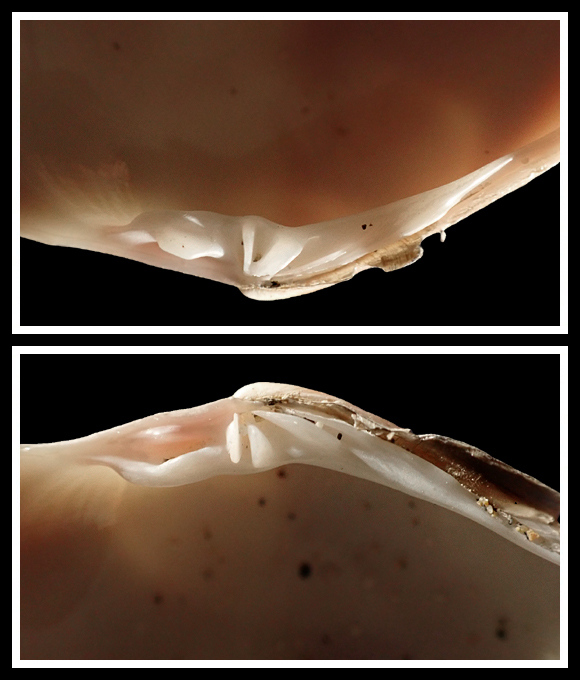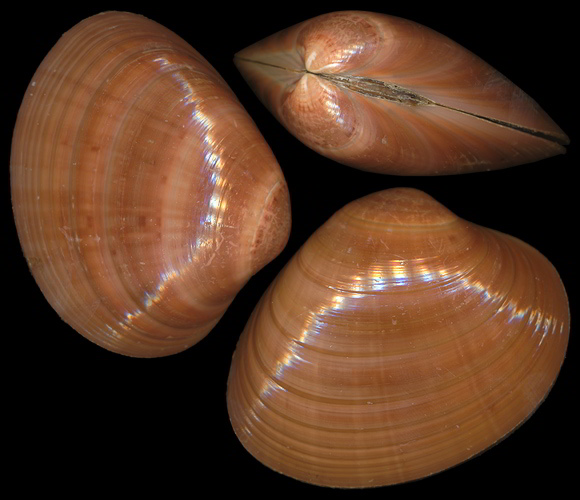
Original taxon: Venus chione. Synonyms: glaber, vulgaris.
« Eine der schönsten Bivalven des Mittelmeers, die an den Küsten der Balearen und Spaniens, Südfrankreich, Piemont, Corsica, Sardinia, Neapel, Sicilien, Ustica, Adria-Venedig, Triest und Pirano, Zara, Malta, Morea [Peloponnese], Aegeische Inseln, Tunis, Algerien, in Tiefen von 5 to 40 Faden fein sandigen Grundes gefunden wird. In atlantischen Ocean an den Südküsten von England und Irland, Holland, Frankreich, Spanien, Portugal und Canarische Inseln, Azoren. » – H. C. Weinkauff: Die Conchylien des Mittelymeeres, Bd.1, Cassel 1867.
5-6m deep, Vouliagmeni marine lake, west of Perachora, Loutraki area, N. Korinthia, Greece. 78-80mm.
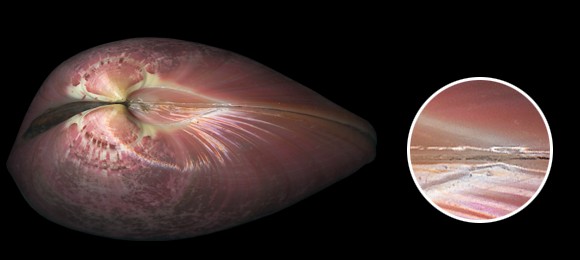
Weinkauff: « The colour is quite variable and ranges from chestnut brown to pale whitish with all kinds of intergrades, and goes to even white specimens, and more or less pure pink ones. » – 12m, in sand, Málaga, Andalucia, S. Spain. 73mm.
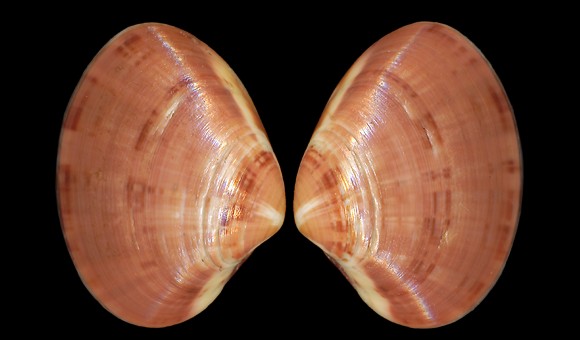
Beachstormed juvenile, near the entrance of Ayrolles lagoon, Gruissan, Occitania, S. France. 18mm.
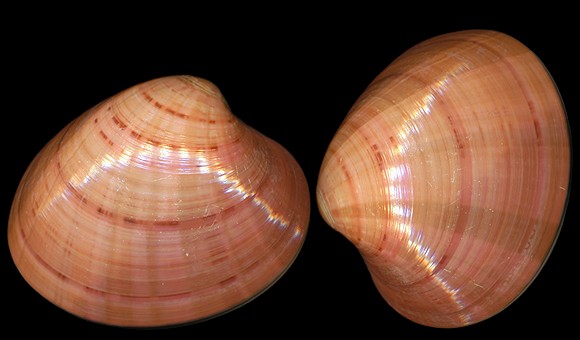
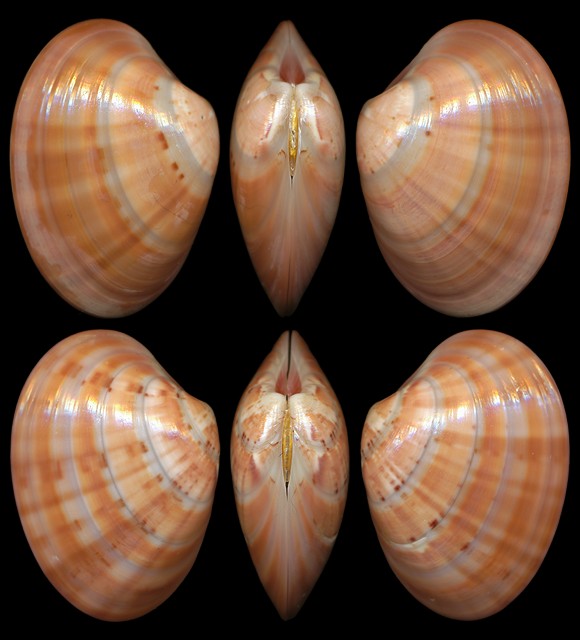
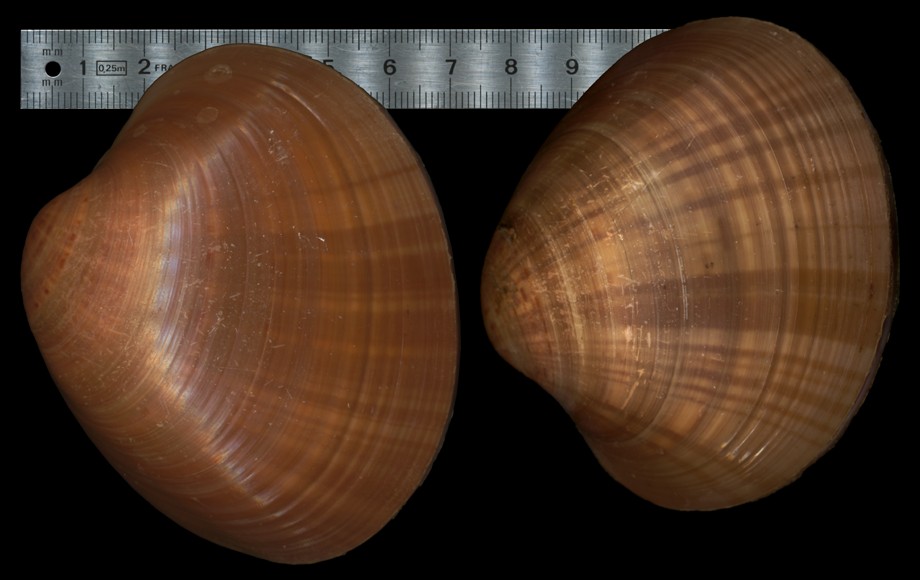
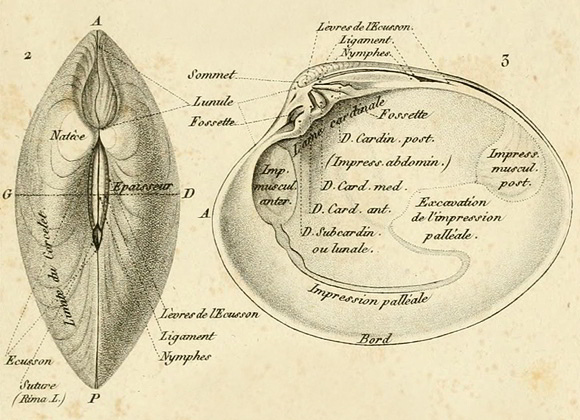
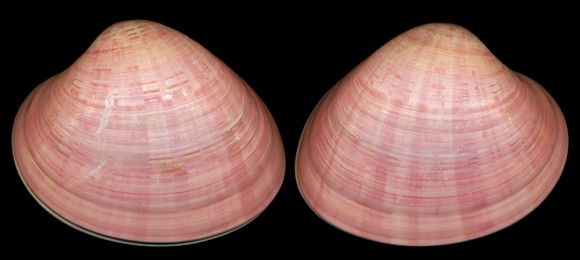
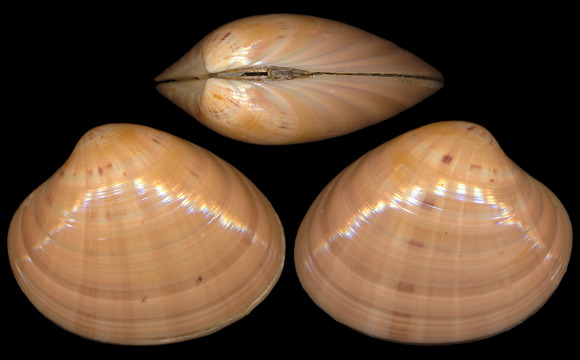
At extreme low tide in sand, Plage des Grands Sables, Île de Groix, S. Brittany, NW. France. 62mm.
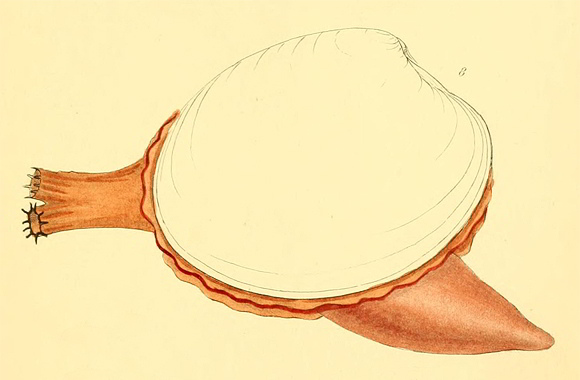
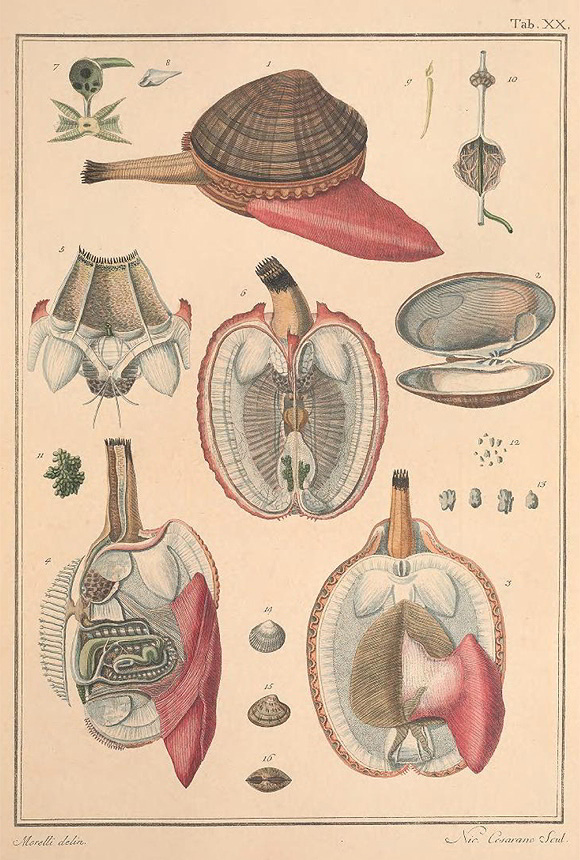
« The Fig. 1 represents this shell of mediocre size, with the fringe of the pallium of the animal, with the foot, and with the siphons somewhat stretched outside. […] Fig. 2. The shell only, open to make visible the hinge, and the prints left by the adductor muscles of the valves. […] Fig. 3. The animal extracted unharmed from its shell, and extended, presented face on. […] Fig. 6. The same unharmed animal, represented from the backside. […] Fig. 4. Preparation of the same animal seen from the side, with the vessels tinted by mercury. […] Fig. 7. Represented in this figure, the dissected ventricle, to make visible the pylorus, the cavities of the biliary ducts, the esophagus, the mouth. […] Fig. 10 represents the notably enlarged and desiccated heart […] Fig. 11. A small group of follicles, whose the liver is composed… »
